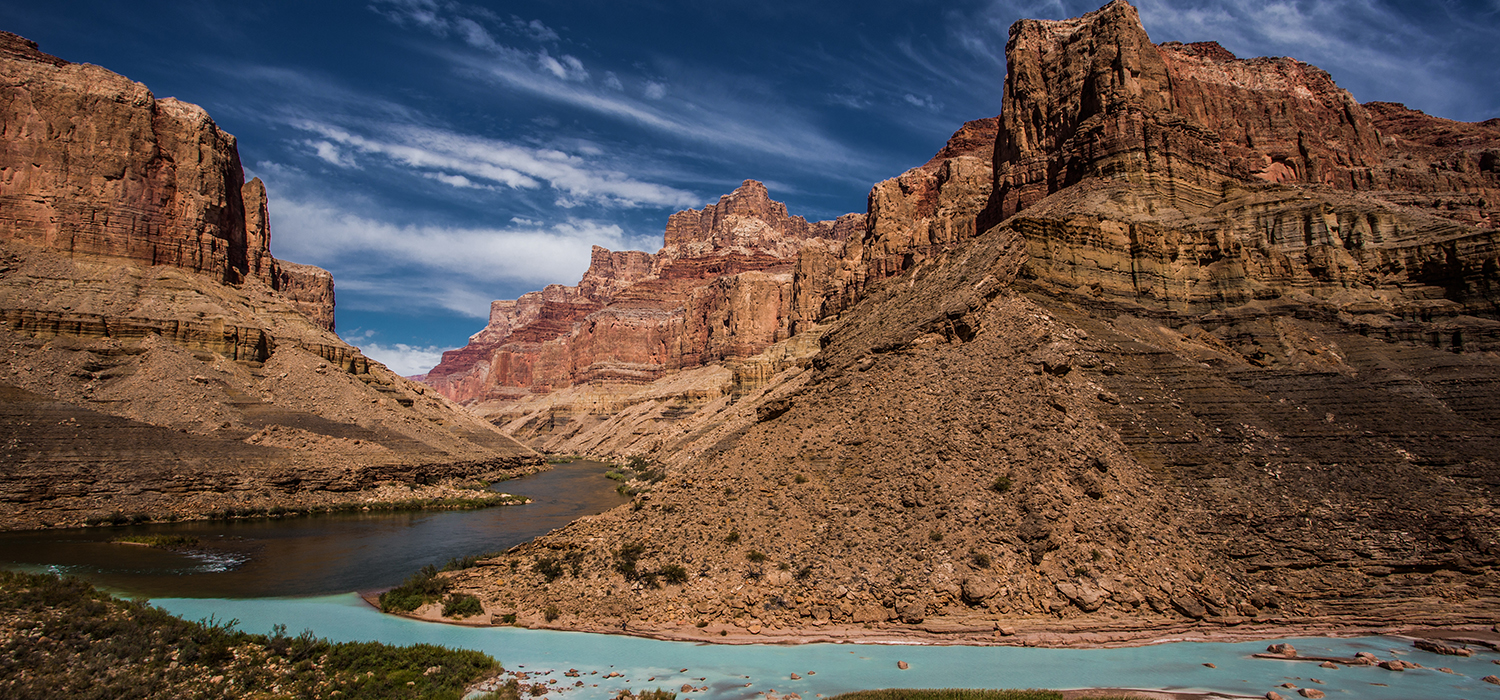
For thousands of years, the Little Colorado River has sustained life on the Colorado Plateau. Its waters irrigate farmers’ crops, provide refuge for endangered fish, and support a diverse array of plant life and wildlife. To this day, the Little Colorado River remains an important physical, spiritual, and cultural lifeway for Native peoples. This past year, we’ve been talking to Hopi, Navajo, Zuni, Hualapai, and White Mountain Apache individuals about their personal and cultural connections to the Little Colorado River.
Here’s a sneak peek of our conversation with Lyle Balenquah, Hopi archaeologist from the village of Paaqavi (Reed Springs Village) on Third Mesa and member of the Greasewood Clan.
 DEIDRA PEACHES
DEIDRA PEACHES
Water is of course really important to us here in the Southwest. For a lot of Indigenous cultures, there is the phrase, “Water is life.” We recognize that as water being essential to our survival. As Hopi people, we’re known to be dry farmers. What that means is that as we farm our crops — corn, beans, squash, and other crops — we’re predominantly relying on the moisture that’s already contained in the soil. We don’t irrigate in any large scale. So water is really important in that regard, because we rely on the winter snowpack and the later monsoon rains to help germinate our crops.
Back in our ancestral history, the Little Colorado River was an important area for us to live and farm. It’s associated with our ability to grow crops and maintain ourselves. When you get down to the confluence area of the Little Colorado River and Colorado River, that’s where you really enter an area of increased significance. It’s along the Hopi Salt Trail, so there’s various shrines that are dedicated to different deities. Down in the confluence area, there is also the Sipapuni, which is the cultural origin point for Hopi ancestors. That whole geographic area has religious and spiritual significance for us, but also we recognize it as being a really important part of the natural landscape down in the Grand Canyon area.
I knew it was a “sometimes river.” Sometimes we would see it flowing, sometimes it was completely dry. It wasn’t until much later, probably my late teens and early 20s, that I really started to get an understanding of the Little Colorado River in terms of Hopi history and how it’s connected to our ancestral lands. Even though it’s now outside the borders of the Hopi Reservation, the cultural knowledge and traditional knowledge that’s associated with it brings that back home, so to speak. Nowadays, we do recognize it as an important cultural landmark within Hopi history and that our ancestors were utilizing and living along the river.
 BLAKE MCCORD
BLAKE MCCORD
The overuse of it. The Little Colorado River is really heavily populated by invasive species — tamarisk and Russian olive. Those are pretty noticeable along the drainage. How are those plants impacting the overall watershed? How are we utilizing the river? Are we over-pumping it? I know it’s dammed further upstream, so what is that doing to the ecosystem of the lower stretches of the Little Colorado River? Are there pollutants being introduced into the system? And the ancestral sites located along the Little Colorado River, how are those being impacted by uses along the river?
All Hopi individuals have their own understandings of what that river means to them from a cultural standpoint. I can’t speak for all of them about how they are connected to it. But for myself, it’s an important part of who we are. To go and look at it and try and remember some of the cultural history that’s associated with it — those are ways that I maintain some of those connections.
Yes, it’s a beautiful area to go into when the turquoise-blue waters are flowing — that’s one reason why people want to see that. But also, I would like for them to recognize that it does still have that continued cultural significance for modern-day living Indigenous people. That it’s not something that is just rooted in the past. And that as modern Natives, we still maintain that connection, so it’s not forgotten.
EDITOR'S NOTE: The views expressed by Advocate contributors are solely their own and do not necessarily represent the views of the Grand Canyon Trust.

Also in this issue:
With the proposed Big Canyon dam still looming, it's time for long-term safeguards for the Little Colorado River. Read more ›